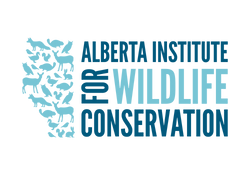👇 Psst... scroll down to fill out the details and add to your cart! 👇

Each package comprises a personalized certificate with the recipient's name, an 8 x 10 photo, and qualifies for a tax receipt.
🎁 Holiday Shipping Update: Expect delays on physical sponsorships. Order by Dec 7 for the best chance of delivery.
(Streptopelia decaocto)
Date of admission: Oct 8, 2025.
Reason for admission: Physical Injury.
Patient History:
Eurasian collared doves, as the name might suggest, are native to Europe and Asia. In the 1970s, Eurasian collared doves were introduced to the Bahamas. They rapidly adjusted to this new environment and quickly colonized much of North America. In Canada, these doves can be found year-round in southern British Columbia, Alberta, and Saskatchewan.
Eurasian collared doves are close relatives of Alberta’s mourning dove, with a similar appearance sometimes only discernible by the black ring of feathers around the collared dove’s neck. Like mourning doves, Eurasian collared doves primarily feed on seeds and grains. Both doves are often found in agricultural areas with fields of grain and farmyards, but can also be seen in urban areas where they frequently visit bird feeders.
Eurasian collared doves often mate for life and build nests together in trees or on telephone poles. In Canada, female birds of this species are able to have multiple broods per season, with one to two eggs at a time. The young remain in the nest for two to three weeks before leaving, and females may lay another clutch of eggs before the young from the first brood have fully fledged. In more southern areas of their range, Eurasian collared doves will raise chicks all year round.
This Eurasian collared dove came to AIWC after they were found struggling to fly in Didsbury, AB. Following intake, it was confirmed through X-rays that the dove had a fracture of their coracoid - a bone in the shoulder.
In addition to the coracoid fracture, the dove sustained fractures to their radius and ulna bones in their right wing and had a wound on their chest at the keel bone. With so many injuries, this patient requires lots of hands-on care that includes frequent bandage replacements and daily gavage feedings (feeding through a tube).
As they have adjusted to their environment in care and their wounds have begun to heal, they have been able to start feeding themselves and are undergoing physiotherapy to improve the range of motion in their wing.
Once their injuries have healed further and they have gained enough healthy weight, they will be able to begin flight conditioning in an outdoor enclosure - a critical step in their recovery journey to release!
Thank you for supporting their care!
